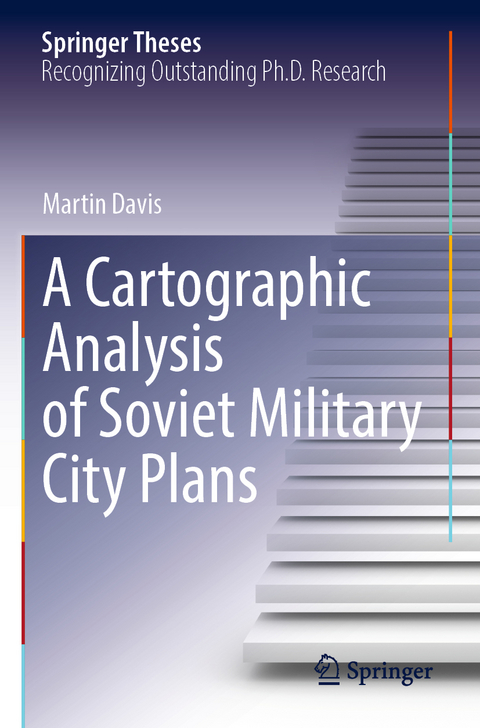
A Cartographic Analysis of Soviet Military City Plans
Springer International Publishing (Verlag)
978-3-030-84019-8 (ISBN)
The collapse of the Soviet Union has seen the emergence of its unprecedentedly comprehensive global secret military mapping project and the commercial availability of a vast number of detailed topographic maps and city plans at several scales. This thesis provides an in-depth examination of the series of over 2,000 large-scale city plans produced in secret by the Military Topographic Directorate ( ) of the General Staff between the end of the Second World War and the collapse of the USSR in 1991. After positioning the series in its historical context, the nature and content of the plans are examined in detail. A poststructuralist perspective introduces possibilities to utilise and apply the maps in new contexts, which this thesis facilitates by providing a systematic, empirical analysis of the Soviet map symbology at 1:10,000 and 1:25,000, using new translations of production manuals and a sample of the city plans. A comparative analysis with the current OpenStreetMap symbology indicates scope for Soviet mapping to be used as a valuable supplementary topographic resource in a variety of existing and future global mapping initiatives, including humanitarian crisis mapping. This leads to a conclusion that the relevance and value of Soviet military maps endure in modern applications, both as a source of data and as a means of overcoming contemporary cartographic challenges relating to symbology, design and the handling of large datasets.
lt;p>Martin Davis is based in the Research and Higher Education Division of the Royal Geographical Society (with IBG) in London. After receiving the British Cartographic Society's inaugural Ian Mumford Award in 2015, Martin completed his PhD in Geography at Canterbury Christ Church University in 2018. He has been Editorial Assistant and Book Reviews Editor of The Cartographic Journal since 2014 and, in 2019, was appointed Executive Secretary of the International Cartographic Association (ICA) Commission on Topographic Mapping.
Russian and Soviet Cartography: A Concise History.- An Introduction to Soviet Military City Plans.- Towards an Ontogenetic Approach to Soviet Military City Plans: a Post-Representational Epistemology.- Developing an Approach to Analysing Soviet City Plans.- The Methodology.- Analysing the Symbology of Soviet Military City Plans.- Discussion.
"The book spans eight chapters richly illustrated with extracts from Soviet city plans. It is a 'must read' for anyone interested in Soviet military cartography during the Cold War. ... the quality of the book as an important contribution to the growing body of research on the Soviet military mapping programme during the Cold War." (Stig Roar Svenningsen, Imago Mundi, Vol. 74 (2), 2022)
“The book spans eight chapters richly illustrated with extracts from Soviet city plans. It is a ‘must read’ for anyone interested in Soviet military cartography during the Cold War. … the quality of the book as an important contribution to the growing body of research on the Soviet military mapping programme during the Cold War.” (Stig Roar Svenningsen, Imago Mundi, Vol. 74 (2), 2022)
| Erscheinungsdatum | 05.10.2022 |
|---|---|
| Reihe/Serie | Springer Theses |
| Zusatzinfo | XXII, 200 p. 97 illus., 91 illus. in color. |
| Verlagsort | Cham |
| Sprache | englisch |
| Maße | 155 x 235 mm |
| Gewicht | 349 g |
| Themenwelt | Naturwissenschaften ► Geowissenschaften ► Geografie / Kartografie |
| Naturwissenschaften ► Geowissenschaften ► Geophysik | |
| Schlagworte | Global Secret Military Mapping • Military Topographic Directorate • Openstreetmap • Soviet Map Symbology • Soviet Military Maps |
| ISBN-10 | 3-030-84019-0 / 3030840190 |
| ISBN-13 | 978-3-030-84019-8 / 9783030840198 |
| Zustand | Neuware |
| Haben Sie eine Frage zum Produkt? |
aus dem Bereich


